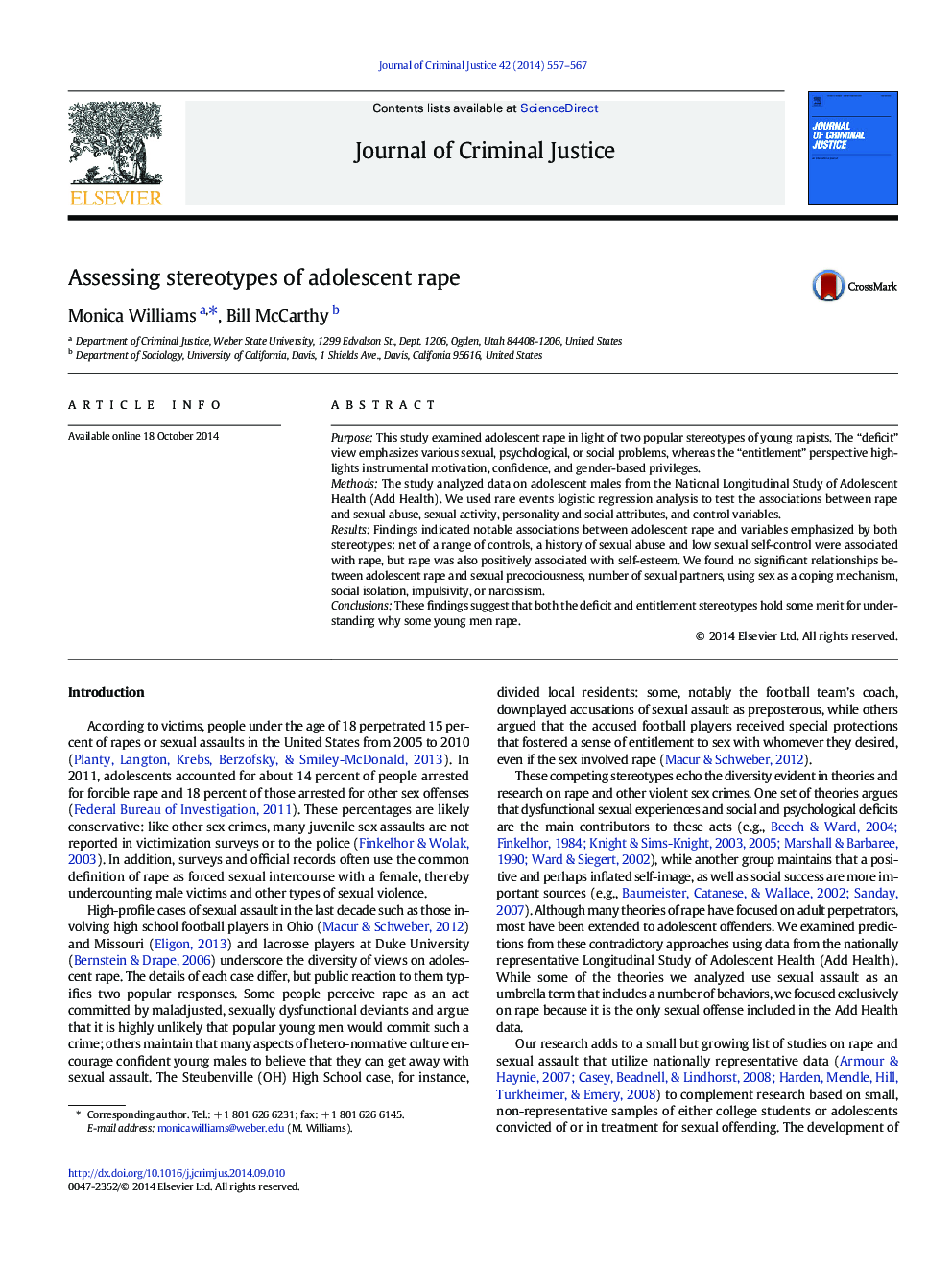| کد مقاله | کد نشریه | سال انتشار | مقاله انگلیسی | نسخه تمام متن |
|---|---|---|---|---|
| 882714 | 912015 | 2014 | 11 صفحه PDF | دانلود رایگان |
• Childhood sexual abuse increases adolescent males’ chances of perpetrating rape.
• Low sexual self-control contributes to rape perpetration in adolescent males.
• Higher self-esteem increases adolescent males’ chances of perpetrating rape.
• Other social psychological and criminological variables do not contribute to rape.
• “Deficit” and “entitlement” perspectives on adolescent rape both hold some merit.
PurposeThis study examined adolescent rape in light of two popular stereotypes of young rapists. The “deficit” view emphasizes various sexual, psychological, or social problems, whereas the “entitlement” perspective highlights instrumental motivation, confidence, and gender-based privileges.MethodsThe study analyzed data on adolescent males from the National Longitudinal Study of Adolescent Health (Add Health). We used rare events logistic regression analysis to test the associations between rape and sexual abuse, sexual activity, personality and social attributes, and control variables.ResultsFindings indicated notable associations between adolescent rape and variables emphasized by both stereotypes: net of a range of controls, a history of sexual abuse and low sexual self-control were associated with rape, but rape was also positively associated with self-esteem. We found no significant relationships between adolescent rape and sexual precociousness, number of sexual partners, using sex as a coping mechanism, social isolation, impulsivity, or narcissism.ConclusionsThese findings suggest that both the deficit and entitlement stereotypes hold some merit for understanding why some young men rape.
Journal: Journal of Criminal Justice - Volume 42, Issue 6, November–December 2014, Pages 557–567
